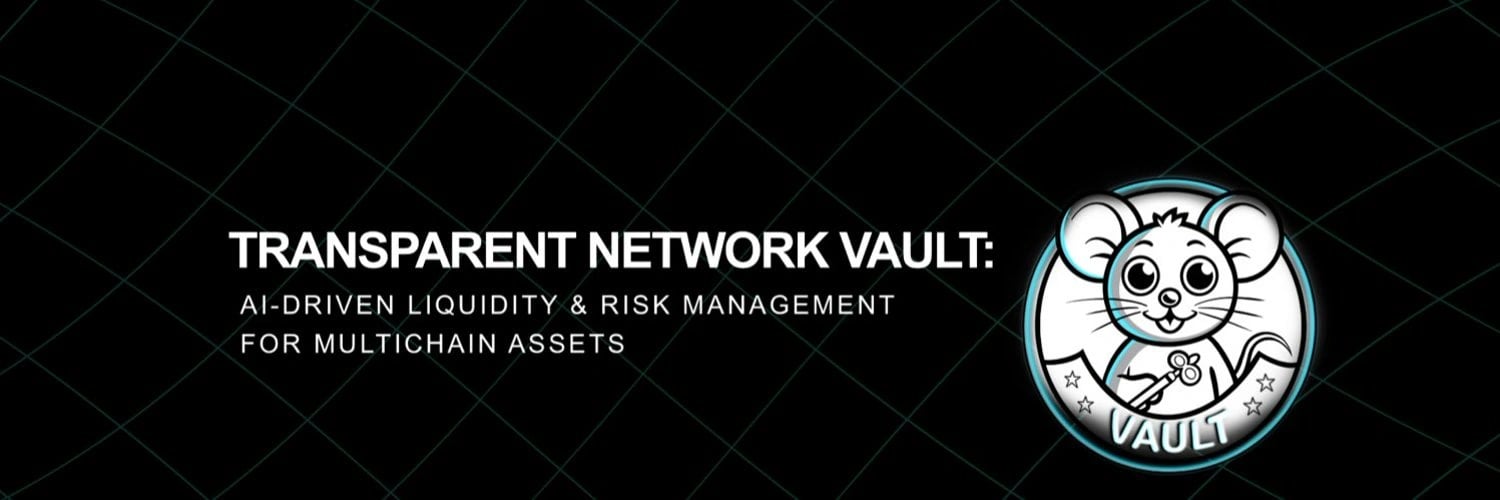위키 구독하기
Share wiki
Bookmark
TN Vault
TN Vault
TN Vault는 사용자가 멀티체인 자산을 담보로 제공하면서 암호화폐 보유량을 매도하지 않고도 유동성에 접근할 수 있도록 지원하는 AI 기반 대출 및 위험 관리 프로토콜을 목표로 합니다.

개요
TN Vault는 사용자가 다양한 암호화폐를 담보로 예치하고 이를 담보로 대출을 받을 수 있도록 지원하는 DeFi 플랫폼으로 보입니다. 해당 프로토콜은 솔라나(Solana), TON, BNB, 이더리움(Ethereum)을 포함한 여러 블록체인을 지원하여 자산 래핑이나 네트워크 간 브리징 없이 네이티브 대출 기능을 제공하는 것을 목표로 합니다. TN Vault는 인공지능을 사용하여 위험 평가, 금리 결정 및 청산 보호를 수행함으로써 기존의 정적 매개변수를 사용하는 전통적인 DeFi 프로토콜과 비교하여 더욱 역동적이고 반응성이 뛰어난 대출 환경을 조성하려고 시도합니다.
해당 플랫폼은 비보관식 멀티체인 지갑, 대출 프로토콜 및 유동성 계층의 세 가지 핵심 구성 요소로 구성되어 있다고 합니다. 이러한 통합된 접근 방식을 통해 사용자는 단일 에코시스템 내에서 자산을 관리하고, 대출에 접근하고, 유동성을 제공할 수 있습니다. 해당 프로토콜의 설계는 사용자 제어 및 보안을 강조하는 것으로 보이며, 비보관식 지갑은 사용자가 개인 키와 자산의 소유권을 유지하는 데 도움이 되도록 설계되었습니다.
TN Vault의 개발 로드맵은 에어드롭을 통한 커뮤니티 구축으로 시작하여 지갑, 대출 기능 및 DeFi 기능을 포함한 핵심 기능 출시로 진행되는 단계적 접근 방식을 제시합니다. 이 프로젝트는 위험 관리와 사용자 접근성의 균형을 맞춘 지속 가능한 금융 생태계를 구축하는 것을 목표로 합니다.

주요 기능
멀티체인 지갑
TN Vault의 비보관식 Web3 지갑은 에코시스템의 기반 역할을 하는 것을 목표로 하며, 다음과 같은 기능을 제공합니다.
- 솔라나(Solana), TON, BNB, 이더리움(Ethereum)을 포함한 여러 블록체인 지원
- 개인 키에 대한 사용자 제어(보안 및 소유권 보장)
- 분산 애플리케이션과의 상호 작용
- 담보 자산 및 대출의 통합 관리
해당 지갑은 사용자 친화적인 인터페이스를 제공하면서 Web3 애플리케이션에서 기대되는 보안 표준을 유지하려는 것으로 보이며, 사용자가 더 넓은 분산 경제와 상호 작용할 수 있도록 지원할 수 있습니다.
AI 기반 대출 시스템
대출 프로토콜은 대출 프로세스의 여러 측면을 최적화하려는 인공 지능을 통합합니다.
- 담보 자산의 위험 평가
- 시장 상황에 따른 동적 금리 결정
- 자동 청산 보호 메커니즘
- 담보 자산에 대한 최대 50%의 담보 대비 대출 비율
이 AI 기반 접근 방식은 정적 매개변수에 의존하는 것이 아니라 변화하는 상황에 적응함으로써 더 효율적인 대출 시장을 조성하여 시장 변동성 중 대량 청산의 위험을 줄이는 것을 목표로 합니다.
유동성 제공
TN Vault는 사용자가 다음을 수행할 수 있도록 하는 유동성 계층을 포함합니다.
- 유동성 풀에 USDT 공급
- 네이티브 $TVLT 토큰으로 보상 획득
- 플랫폼 안정성에 기여
- 시장 수요에 따라 AI 최적화 수익률로부터 잠재적 이익
이 구성 요소는 사용자가 자산을 담보로 대출받거나 보상을 받기 위해 유동성을 제공하는 등 여러 참여 경로를 만들어 플랫폼 내에서 순환 경제를 조성하도록 설계된 것으로 보입니다.
기술
TN Vault의 기술 스택은 자산의 안전한 잠금 및 대출 발행을 용이하게 하는 스마트 계약을 중심으로 구축되어 있습니다. 플랫폼의 워크플로는 구조화된 프로세스를 따릅니다.
- 사용자는 TN Vault 지갑에 자산을 예치합니다.
- AI는 위험을 평가하고 적절한 금리를 결정하려고 시도합니다.
- 자산은 대출에 대한 담보로 스마트 계약에 잠기도록 설계되어 있습니다.
- 사용자는 USDT 유동성을 받을 수 있습니다.
- $TVLT 보상을 획득하기 위해 유동성 풀에 재투자할 수 있습니다.
위험 평가를 위한 인공 지능 통합은 일반적으로 고정된 매개변수와 수동 거버넌스 결정에 의존하여 위험 모델을 조정하는 기존 DeFi 대출 프로토콜과 차별화되는 기술적 접근 방식을 나타냅니다.
토큰 경제
TN Vault의 네이티브 토큰인 $TVLT는 에코시스템 내에서 여러 기능을 수행합니다. 토큰 경제 모델은 "지속 가능하고 균형 잡힌" 모델이며 "장기적인 성장과 에코시스템 안정성을 위해 설계"되었습니다.
유틸리티
$TVLT 토큰은 TN Vault 에코시스템 내에서 다양한 방식으로 사용됩니다.
- 유동성 제공자 보상: 플랫폼의 풀에 유동성을 제공하는 사용자는 $TVLT 토큰으로 보상받습니다.
- 에어드롭 인센티브: 해당 토큰은 사용자 참여와 커뮤니티 성장을 장려하기 위한 플랫폼의 에어드롭 캠페인의 일환으로 배포됩니다.
- 잠재적 거버넌스: 명시적으로 언급되지는 않았지만, 토큰은 거버넌스 목적으로 사용되어 보유자가 프로토콜 변경 및 개선 사항에 대해 투표할 수 있습니다.
사용 가능한 정보에는 특정 토큰 할당 비율이 자세히 설명되어 있지 않지만, 프로젝트는 토큰 분배가 에코시스템의 장기적인 생존 가능성을 지원하도록 구조화되어 있음을 나타냅니다.
잘못된 내용이 있나요?
